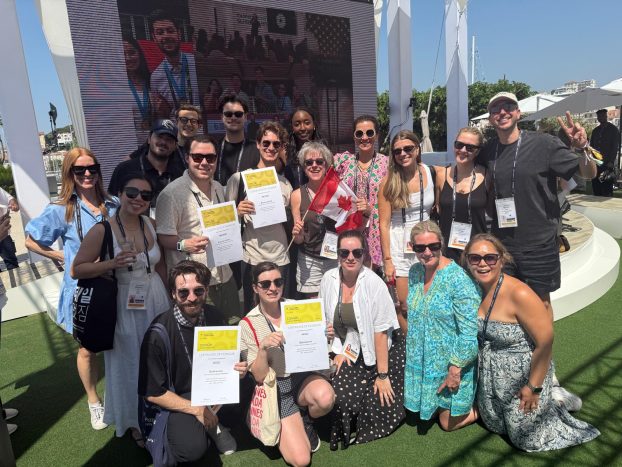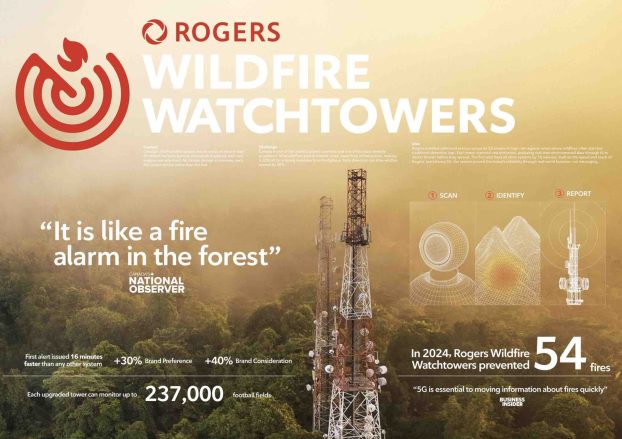It begins with the white heat of passion, and ends with the Arctic chill of indifference. It’s a glorious thing to be an object of desire, longed for each and every day. But all too soon, ardour fades. Eyes that once were filled with love gaze in your direction…only to look right through you. In that instant, the seeds of fear are sown: Could it really be over?
So it goes – in romance, and in the $8-billion North American ‘alternative beverage’ market. Just ask the folks over at Vancouver-based Clearly Canadian Beverage Corp. In the past several years, they’ve watched the consumer’s relationship with their Clearly Canadian brand of fruit-flavoured sparkling waters pass from head-over-heels infatuation to the most tepid sort of fondness.
‘In research, we found that consumers were familiar with the product and had only good things to say about it,’ says Jonathan Cronin, vice-president of marketing for Clearly Canadian. ‘But they didn’t see it anymore. There was one consumer who summed it up for us by saying, ‘I know your bottle’s there on the shelf, but I just don’t notice it.”
How to re-ignite that blaze of passion? Lovers have been known to go to spectacular lengths – and that’s exactly what the Clearly Canadian brand has done in its bid to recapture a place in consumers’ hearts.
‘If consumers weren’t looking for the brand anymore, then we needed to give them something that would attract their attention and make them seek it out,’ Cronin says. That ‘something’ turned out to be a radical packaging overhaul, which made its debut March 1.
Packaging has been critically important to Clearly Canadian ever since the brand first hit the market in 1989. Its bold look – the distinctive clear, pear-shaped glass bottle – stood out dramatically in a sea of cans and plastic containers, communicating in no uncertain terms that this product was indeed something new under the sun.
At the time, the alternative beverage category (which encompasses just about everything that isn’t a soft drink or a dairy product) represented no more than $600 million in annual sales. However, the arrival of Clearly Canadian, with its striking package design and unusual flavours, proved one of the catalysts for growth in this market.
In recent years, consumers have seen a profusion of new brands in the category – from sports drinks to iced teas to premium sodas, many with unique packaging twists of their own. According to industry estimates, Cronin says, the average North American now drinks an estimated 103 different alternative beverages in the course of a single year.
When it comes to this kind of product, the youthful target audience tends to crave the new and different – and therein lay Clearly Canadian’s dilemma. After a decade on the market, the brand had begun to look a whole lot like yesterday’s news. Sales had been sliding for five years, and showed no sign of turning around on their own.
‘For several years, we’ve been trying to figure out a way to inject the brand with some life,’ Cronin says. ‘And by this year we’d come to the realization that it needed a significant marketing effort behind it if it was going to survive at all – let alone grow.’
The brand had updated its packaging in 1997, deepening the blue of the bottle and adding more vibrant graphics to convey the fruit flavours. But when the Clearly Canadian team sat down last spring with their packaging design agency, Vancouver-based Karacters Design Group (a division of Palmer Jarvis DDB), they quickly agreed that more radical cosmetic surgery was in order. The brand needed to regain what it had in 1989 – namely, a look that set it apart from everything else in the cooler.
‘The consumer chooses 103 different beverages a year, and we want to be one of those,’ Cronin says. ‘And the only way we can do that is to be different from the other 102, in a very compelling way.’
The redesign proved, in its initial stages, a frustrating process. The common-sense approach was, of course, to modify the existing design – thereby preserving the equities associated with that look – rather than taking a clean-slate approach. Try as they might, however, the designers at Karacters couldn’t find a variation on that theme that stood out the way the original did in 1989. Little by little grew the realization that a more drastic change might be called for.
‘We went through this awkward teenage stage of trying to retrofit bits and pieces of the equity into a new design, and that obviously wasn’t working well’ says Matthew Clark, associate creative director with Karacters. ‘So finally we said, ‘What if we threw out all of the sacred elements? What could we do if we started from scratch?”
It wasn’t an easy proposition to accept, notes Maria Kennedy, vice-president and creative director at Karacters. The existing design, after all, had the virtues of familiarity and recognizability. The more they studied the research, however, the more evident it became that consumers had stopped noticing the old bottle. So what was there, really, to lose?
‘We were holding [the old design] way closer than anybody else out there,’ she says. ‘We were thinking it was more important to keep those elements than consumers did.’
The new Clearly Canadian bottle has a sleeker, more contemporary line, and makes much bolder use of colour. The shrink-sleeve label that covers the bottle is completely opaque, save for a ‘window’ that affords the consumer a glimpse of the product inside. Each flavour’s label is a different hue (red for Strawberry Melon, mauve for Blackberry, green for White Grape, and so on), with a subtle tone-on-tone pattern to lend added visual interest. The underside of the coloured label is a frosted white, so that the bottle seems to glow slightly when one peers through the window.
(For the new diet products that Clearly Canadian is adding to its line, Karacters reversed this design: The shrink-sleeve label is predominantly translucent, except for the ‘window’ area, which is full-colour and opaque.)
In all, Karacters produced close to 40 different design prototypes, incorporating just about every type of colour, shape and imagery imaginable. But from the moment the designers put this concept on the table, Cronin says, everyone realized they were on to something special.
‘It stood out among all the others as a ‘wow’ package,’ he says. ‘I just couldn’t keep my eyes off it – it was that special…. It filled the same role that the original bottle did, in a fresh and different way. It made a statement about what the brand is: premium and sophisticated.’
While the opaque, full-colour label lends dramatic impact, the translucent window still allows Clearly Canadian to showcase a key product attribute: its clear, clean appearance.
‘The window gives a hint as to what’s inside,’ Kennedy says. ‘But where before we showed it completely, now we’re just giving you a little glimpse – and that almost makes it sexier.’
Bottle shape was another key consideration. The alternative beverage category, Clark says, is dominated increasingly by ‘bulbous, overcomplicated’ shapes. The new Clearly Canadian bottle, by contrast, is slender and fits easily into the hand – a particularly important consideration, given that the brand’s consumers tend to skew female. (It’s also taller, and has greater volume: 14 ounces, versus the old bottle’s 11.)
‘Keep it simple’ was the philosophy that guided just about every major design decision. When it came to typeface, for example, the team settled on Helvetica New – a clean, classic style that helps to reinforce the ‘premium and sophisticated’ positioning.
The only element of the label with any complexity at all is the new Clearly Canadian logo – a stylized ‘CC’ orbited by several smaller circles, embodying the effervescence of the product. ‘It’s almost like an exclamation point on the bottle,’ Kennedy says. ‘It’s not the biggest thing on there, just an element that gives a little extra emphasis.’
Clearly Canadian began shipping the new bottle throughout Canada and the U.S. at the start of the month. (No advertising is planned at this stage. Rather, the company has poured most of its resources into securing additional listings, and developing materials for support at the retail level.) Cronin says major distributors have responded enthusiastically to the change – and he anticipates a similar reaction from consumers.
The new design, in his view, answers all of the brand’s requirements. It has the kind of stopping power necessary to capture the attention of style-conscious young consumers. And it conveys a more contemporary image, without seeming hopelessly trendy.
‘Doing something for the sake of being trendy would undermine the proposition of the brand,’ Cronin says. ‘We don’t want to be perceived as fleeting.’
Kennedy agrees. ‘We didn’t want to do something just for the sake of today’s fashion,’ she says. ‘When Clearly Canadian first came out, people gravitated towards it because they had never seen anything like it. And that’s what we wanted to do again.’
Also in this report:
– Between the concept and the shelf: Just because a package looks good doesn’t mean it’ll work. Here’s how designers test their ideas p.31
– Sunrise cleans up with new tofu packaging p.32
– Less really is more: When it comes to attracting the time-starved consumer, the simpler the design, the better p.34




























